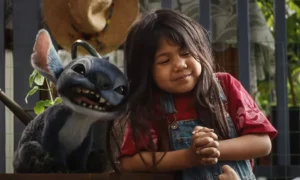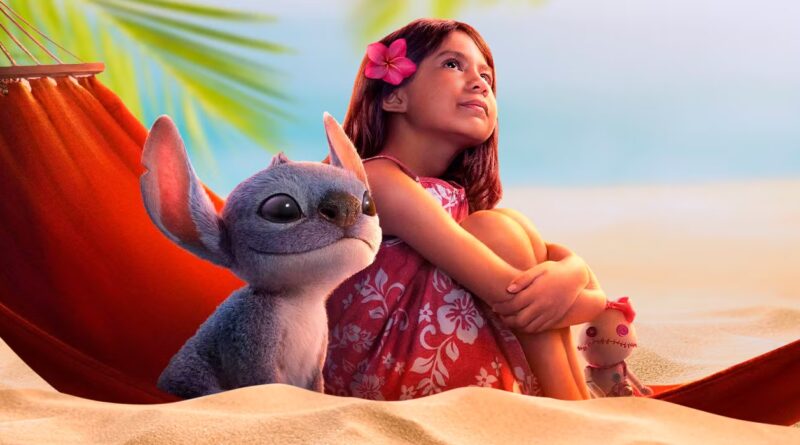Differentiating Cartoon from Live-Action: Lilo & Stitch
This June, Disney has brought a live-action remake of Lilo & Stitch (2025) to theaters, and I have been buzzing with observations. Before my watch, I was, to be totally honest, terrified about seeing this film. I grew up with Disney injected into my veins, which means that I binged the classics, including Lilo & Stitch (2002). I formed a callus bias on what Disney live-action movies should be—copies of their animated counterparts with inoffensive-to-the-original-plot twists. Not to mention, Instagram didn’t ease my negativity, either. It was hard keeping an open mind when countless users were tearing it apart. With all this being said, my bias was shaken during my watch, and I feel that says a lot coming from a Disney freak. Sure, Lilo & Stitch (2025) does not take its animated counterpart’s place, as Lilo & Stitch (2002) is nostalgic. However, I will confirm that live-action Lilo & Stitch is not as bad as people say. In fact, it is one of the better Disney live-action remakes I have come across.
There were a couple of twists about this film that I thought were clever. Before I dive into them, however, I would like to shed some light on its older parallel.
Created by an extraterrestrial scientist named Jumba Jookiba (David Ogden Stiers), a mischievous blue alien named Experiment 626 (Chris Sanders) escapes from the United Galactic Federation after being prosecuted for being a dangerous abomination, landing on an earthly Hawaiian island called Kauai. He meets a quirky little girl named Lilo (Daveigh Chase) and her older sister Nani (Tia Carrere). Believing wholeheartedly that 626 is a dog, Lilo decides to call him “Stitch” and adopt him as her puppy despite Nani’s disliking, bringing him into her Ohana (family in English). But his notoriousness in space does not drop like a hat after landing on Earth. His criminal maker Jumba and his partner Agent Pleakely (Kevin McDonald) are trying to capture him for the United Galactic Federation, stalking him until he crumbles around his human environment. Through these events, not only does Stitch see that he can be loved as the creature he is, but he can also form his own identity despite his wicked programming.
I will say this about Lilo & Stitch—it’s deeper than it looks.
Alien movies were nothing new in the early 2000s. Before Lilo & Stitch, audiences had films like E.T. the Extra-Terrestrial (1982), the Alien franchise (1979-2024), and, of course, Star Wars (original trilogy (1977-1983)) and prequel trilogy (1999-2005)). Aliens were perceived in the media as horrifying, dangerous beings against the human race for decades. No one really had cute or funny representations of aliens prior to Lilo & Stitch (unless you count E.T. and Spaceballs (1987)). I feel that Stitch’s unique anatomy changed the way people thought about aliens, at least it altered my perception as a kid scared of my own shadow. Instead of them being disfigured, unfeeling creatures out for blood, they can yearn for love and acceptance like humans. They can be like us.

While Lilo & Stitch (2025) follows the same story and involves many of the same characters, soundtrack songs, and themes as Lilo & Stitch (2002), there are multiple twists in the film that sets itself apart. The biggest twists are its subplots, subthemes, character changes, and role absences. For starters, Nani (Sydney Agudong) is not just a struggling 18-year-old focused on providing for Lilo (Maia Kealoha) like in the original film. She has an interest in going to college and pursuing a career in marine biology. Throughout the movie, we see her battling this desire in order to take care of her younger sister, generating this sub-theme: finding a balance between pursuing dreams and upholding responsibilities. This theme is especially apparent when her social worker encourages the idea of someone else taking care of Lilo, which makes Nani break. Nani sees this as a good option, as not only will she be able to follow her dream, but she will also be giving Lilo a stabler home. Not many people on social media enjoyed this change, as it counteracts the whole “family means nobody gets left behind or forgotten” theme. Nevertheless, I believe this twist provides a more realistic perspective on people like Nani. Sometimes, love isn’t enough to work situations out. Sometimes, love means separating yourself from those we love for their own wellbeing.
I see myself in Nani, as I am around her age. If I had a five-year-old sister and my parents dropped dead at this moment, would I be able to foster her life and my own? It’s a hard question to answer.
As a result of this slight character-plot addition, Lilo goes off to live with her loving neighbor Tutu (Amy Hill) while Nani attends college. This ending is different from Lilo & Stitch (2002) ending with them staying together, yes, but it can be categorized as bittersweet, working for both Nani and Lilo. They also get to see each other often, thanks to alien technology. In my opinion, this ending works in a present-day, live-action sense.
Cobra Bubbles’ (Cortney B. Vance) role is slightly altered in this film, too. Instead of him being a retired CIA agent, he is still on the prowl, working to catch aliens that have landed on Earth. He only becomes a social worker toward the end of the film to disguise his CIA identity, to enter Nani and Lilo’s home in order to catch his target alien. His role is certainly more distinguished and badass in this version of Lilo & Stitch. It also works because Mrs. Kekoa (Tia Carrere, yes, the same woman who voiced Nani in the original film) is present, acting as Nani’s official parenting-overseer. This change certainly emphasizes his CIA agent’s background, which I adore. Growing up, I always wondered about Cobra Bubbles’ past. I finally got a better taste of his CIA identity in this film. This change additionally makes human services slightly more well-represented, as Mrs. Kekoa is strictly a social worker who not only prioritizes the wellbeing of Lilo, but also the wellbeing of Nani. She is not as cold as animated Cobra Bubbles (Ving Rhames).

The only thing I didn’t like while watching this film was the absence of Captain Gantu (Kevin Michael Richardson). Even though he plays a small role in most of the 2002 film, he is still a pretty bad guy, kicking Jumba and Pleakley out of the bad-guy park. Not to mention he is a cool-looking alien, massive compared to the other characters. In the 2025 film, he is nonexistent. So that leaves Jumba (Zach Galifianakis) as the ultimate bad guy with Pleakley being his silly accomplice, almost succeeding in capturing Stitch as well as Lilo. This replacement, or I should say this massive alteration, boosts Jumba’s evilness and erases his initial character arc in the original film. In the 2002 movie, Jumba decides to go against Grand Councilwoman’s (Hannah Waddingham) wishes in Stitch being captured and sides with his creation. He does nothing of the sort in the live-action film. He also does not have a Russian accent like in the original.
I wish they kept Captain Gantu because he acted as Grand Councilwoman’s henchman. I also believe that Jumba’s initial character arc and accent provided massive amounts of heart and sustenance to his personality.
Lastly, I can’t forget about the CGI. I would say that it’s less than par, but not the worst thing I have seen. The aliens almost look doughy-looking, soft, and undefined, unlike their hand-drawn, watercolor parallels. Even so, they also look cute. Especially Stitch. I guess we can say that I am on the fence about the CGI.
Is Lilo & Stitch (2025) worth the watch? I would say that it is as long as we are not expecting to feel warm fuzzies. I believe that the main goal of Lilo & Stitch (2025) is to refine the older version, to make it more relatable and realistic for audiences. I can jump on this bandwagon.
Can you?

